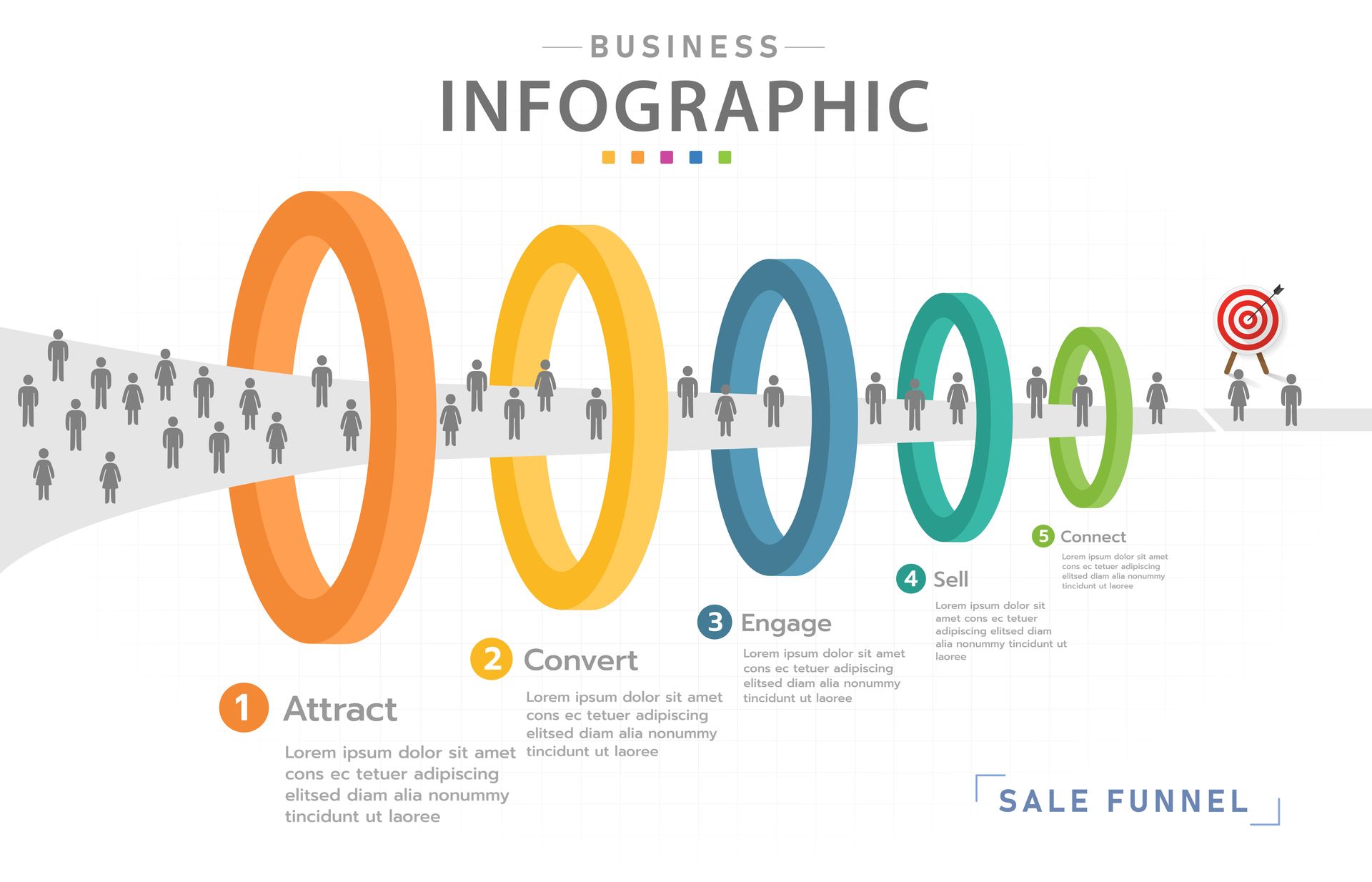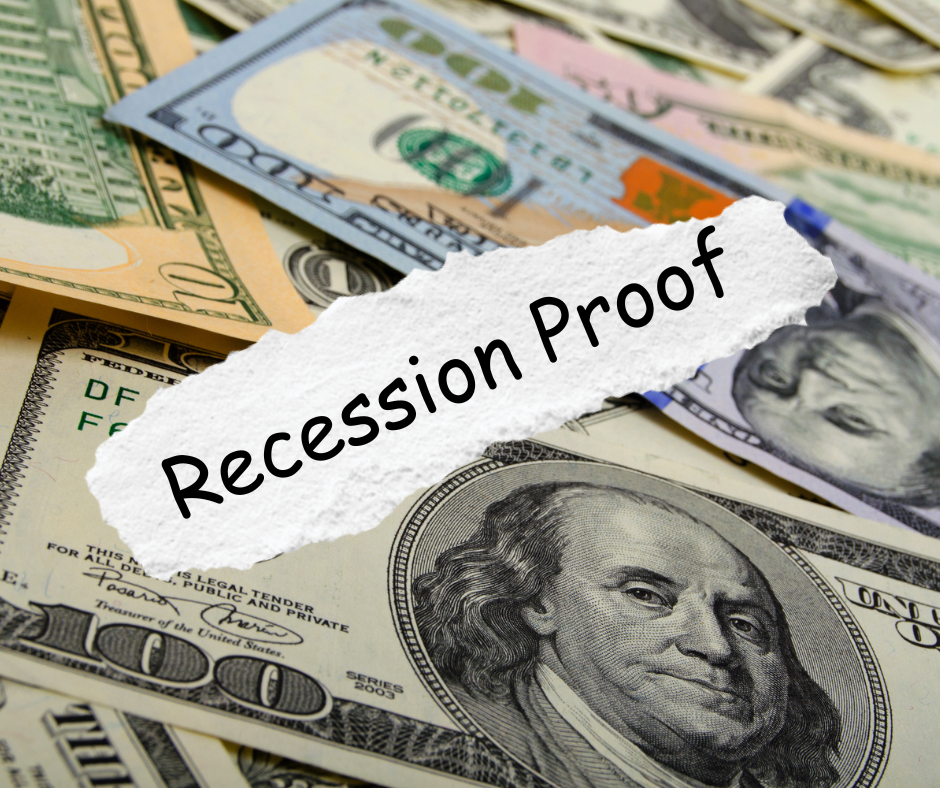How to Create a Marketing Funnel for Small Business Owners: A Comprehensive Guide

Discover the Key Steps to Building an Effective Marketing Funnel for Your Small Business
Introduction
Effective marketing is essential for your company's success. Many entrepreneurs overlook the marketing funnel. This step-by-step process helps guide potential customers from awareness to conversion, ultimately increasing revenue. In this article, we'll explore the Marketing Funnel and provide tips on how to create it.
It is interesting to look at funnels from the perspective of owning brick-and-mortar and service-based businesses. As a service-based business, it is a must for you to be able to simplify the buying process for your customers. At T-Werx, as a brick-and-mortar business, we should have used marketing funnels for years. It wasn’t until we started implementing some of the strategies below that we saw a significant uptick in our business. Making it easier for your clients to do business with you, regardless of the type of business, should be your top priority. Let’s get started by explaining what a marketing funnel is.
- Understanding the Marketing Funnel
Before creating a marketing funnel, it's essential to understand the concept itself. A marketing funnel is a visual representation of the customer journey, from initial awareness of your brand to making a purchase. It's called a funnel because it narrows down as customers move through each stage, ultimately leading to fewer people converting into paying customers.
The main stages of a marketing funnel are:
- Awareness: The potential customer becomes aware of your brand or product.
- Interest: The potential customer shows interest in your brand or product.
- Evaluation: The potential customer evaluates your brand or product and compares it to competitors.
- Decision: The potential customer decides to purchase your product or service.
- Purchase: The potential customer completes the transaction and becomes a paying customer.
2. Identify Your Target Audience
You must understand your target audience clearly to create an effective marketing funnel. This means knowing who they are, what they want, and their pain points. Ask yourself the following questions:
- What demographic does your target audience belong to? Consider factors like age, gender, and location.
- What are their interests, hobbies, and preferences?
- What challenges or problems do they face that your product or service can solve?
- What are their online behaviors? Which websites, social media platforms, and online communities do they frequent?
You'll be better equipped to create content and marketing strategies that resonate with your target audience by answering these questions.
3. Create Engaging Content
Creating engaging content is a crucial component of a successful marketing funnel. This content should be tailored to each stage of the funnel, addressing your target audience's unique needs and pain points. Here are some content ideas for each stage:
- Awareness: Blog posts, social media updates, and videos that offer valuable information about a topic related to your product or service.
- Interest: Ebooks, case studies, and in-depth articles that showcase the benefits of your product or service.
- Evaluation: Comparison charts, testimonials, and product demos that highlight the advantages of your brand over competitors.
- Decision: Exclusive offers, promotions, and free trials to incentivize potential customers to choose your product or service.
- Purchase: User-friendly checkout processes, transparent pricing information, and multiple payment options to make the purchasing process as seamless as possible.
Remember to optimize your content for search engines by incorporating relevant keywords, creating compelling meta descriptions, and using proper header tags. This will help to increase your visibility on search engine results pages (SERPs) and drive more organic traffic to your website.
4. Set Up Your Marketing Channels
Once you clearly understand your target audience and have created engaging content, it's time to set up your marketing channels. You'll use these platforms and tools to distribute your content and attract potential customers. Some popular marketing channels for small businesses include:
- Your website: Ensure that your website is optimized for both desktop and mobile users, with straightforward navigation, fast loading times, and a visually appealing design.
- Email marketing: Build an email list of potential customers and send them personalized, relevant content and promotions to nurture their interest in your brand.
- Social media: Choose the most popular platforms among your target audience, and create and share engaging content to build a following and generate leads.
- Search engine optimization (SEO): Optimize your website and content to rank higher in search engine results and attract organic traffic.
- Paid advertising: Invest in pay-per-click (PPC) ads on platforms like Google Ads and social media to reach a larger audience and drive targeted traffic to your website.
5. Monitor and Optimize Your Marketing Funnel
Once your marketing funnel is in place, monitoring its performance and making data-driven decisions to optimize it over time is crucial. Analyze key metrics at each stage of the funnel, such as:
- Website traffic: Monitor the number of visitors to your website and the sources they come from using tools like Google Analytics.
- Conversion rates: Track the percentage of visitors who take desired actions, such as signing up for your email list, downloading a resource, or purchasing.
- Bounce rates: Assess the percentage of visitors who leave your website without engaging with your content or taking action.
- Cost per acquisition (CPA): Calculate the average cost of acquiring a new customer through your marketing efforts.
By tracking these metrics, you can identify areas of your marketing funnel that need improvement and make the necessary adjustments to enhance performance.
6. Implement Retention Strategies
Acquiring new customers is essential, but retaining existing ones is equally crucial for the long-term success of your small business. Implement retention strategies to keep customers returning for more and turn them into brand advocates. Some effective retention tactics include:
- Personalization: Send personalized content and offers to your customers based on their preferences and previous purchases.
- Customer support: Offer exceptional customer service and support through multiple channels, such as email, phone, and social media.
- Loyalty programs: Create a loyalty program that rewards customers for repeat purchases and referrals.
- Re-engagement campaigns: Reach out to customers who haven't purchased in a while with special offers and incentives to win them back.
7. Test and Iterate
Creating an effective marketing funnel is an ongoing process. Continuously test different strategies and tactics to see what works best for your small business. This could include experimenting with different types of content, adjusting your targeting and messaging, or trying new channels. Keep track of results, learn from your successes and failures, and iterate on your marketing funnel.
Conclusion
Creating a marketing funnel is a critical aspect of growing your small business. By understanding the stages of the funnel, identifying your target audience, and creating engaging content, you can effectively guide potential customers through their buyer journey. Remember to optimize your marketing channels, monitor your funnel's performance, and implement retention strategies to ensure long-term success. With persistence and continuous improvement, your marketing funnel will become a powerful tool for driving conversions and growing your small business.
Jeff Kikel is the CEO/Founder of T-Werx LLC, a Coworking and Real Estate Investment company based in Cedar Park, Texas. Jeff is the founder and owner of multiple Real Estate, Finance, and Media Industries businesses. He is the author of 6 books, with the 7th book, Freedom Day: Quit the Job You Hate and Live the Life You Love
coming out in the Spring of 2023.


